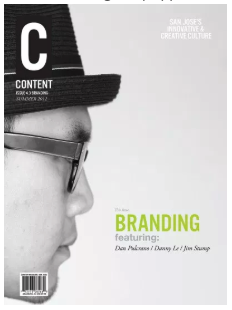“In the end, however, we get our stories, the important thing is to keep passing them on.”
People walking into Hicklebee’s at 1378 Lincoln Avenue in downtown Willow Glen are entering a child’s imagination. Here, the best in children’s literature lines the shelves, and the characters peer out from the walls. From the worn cushions to the mismatched chairs, Hicklebee’s is every bit an independent bookstore. There are no gleaming register lines or stacks of discount buys; instead, there is a bathtub filled with pillows (for reading in, of course) and Clifford the Big Red Dog’s collar.
On the walls, there is a collection that can only be deemed “Hicklebee’s Museum.” Framed original illustrations from Rosemary Wells’ Ruby and Max occupy a place of honor next to a model of the plug from King Bidgood’s in the Bathtub. A sign hangs nearby reading “Diagon Alley” right next to Charlotte spinning a web. What wall space remains is covered in signatures and drawings from almost every famous author or illustrator in children’s literature, including Jules Feiffer, illustrator of the classic Phantom Tollbooth, and Harry Potter creator J.K. Rowling. Yet what makes the illustrations all the better is that many of them are scrawled across bathroom doors. It’s bathroom graffiti for children.
Enter Valerie Lewis, the last remaining founder and current co-owner of Hicklebee’s. “Sometimes we have a hard time explaining to [the children] why they can’t write on the walls at home,” she laughs. Lewis points out more artifacts littering the tops of shelves and signatures along doorways from authors and illustrators who have visited the store over the years. “We never know what they’re going to sign or what they’re going to do,” she says. “I always think to myself, ‘I know this person, and they just drew their character on a toilet.’”
When Hicklebee’s began over 33 years ago, the walls were blank. “It was like the artist looking at a canvas,” Lewis remembers. “I love the fact that I had this store and no experience and a zillion possibilities and that there was no end to the possibilities. I loved that idea.” Over the years, these same possibilities have shaped what has been recognized as one of the nation’s best children’s bookstores. Hicklebee’s stands alone in a market where the gap between quality children’s literature, found in the libraries of academia, and the overly commercialized form of children’s entertainment, found in modern bookstores, looms large.
In the beginning, however, it was simply the collective dream of four friends who had no experience owning a bookstore. “We all came in my house and sat in the kitchen, and everybody brought their favorite children’s books,” Lewis recalls. “I would open them up and see this one is from Harper and Row, and I would call information in New York.” Eagerly, Lewis would contact the desired publishers for catalogs. “We would think, ‘They are going to be so excited when they find out about us.’”
As straightforward as Hicklebee’s beginning was, the way it has unfolded and transformed has been anything but simple. Rather, Hicklebee’s has metamorphosed into something more complex over the decades through the collective efforts of authors, illustrators, and even the readers. During a tour, Lewis gently pulls down an unassuming brown shopping bag labeled “Ollivanders” from a top shelf. A child who frequents the store brought it back from a trip to England and gave it to Lewis for the museum. Peeking inside the bag, customers can see a magic wand nestled among the tissue paper wrapping. “We just started it,” Lewis emphasizes. “It was the authors who did the additions.” She points to a three-foot-tall cardboard cutout of a gorilla hanging from the ceiling. “See that ape?” she asks. “Well, Peggy Rathmann is a Caldecott award-winning illustrator. One day, she and her husband drove up. They opened the door, pulled out a ladder and a rope, and hung that.”
“Let’s go hang it at Hicklebee’s” is the quintessential thought behind this local treasure. With the opening and subsequent closing of the big chain bookstores, and the advent of discount online shopping, this small independent store has weathered the storm of consumer habits. Lewis and the shop’s associates often observe patrons browsing books, scanning their barcodes with pricing apps on smartphones, and then walking out the doors, perhaps only to order the same book with next-day free shipping and no sales tax from the internet. Some even download the books straight to their devices. Lewis comments powerfully on the recent trend: “When people compare electronic books for children and picture books for children, they are comparing apples and artichokes. An electronic book is no more a book than a radio or a television is a book. They are all telling stories, but a book looks like that, in my opinion.” Lewis points to a stack of books with crisp white pages, nestled between bright covers. One can’t help but think of the difference between seeing a photograph of a painting and being able to see the texture of the brush strokes on the original in a gallery.
Yet, Lewis remains optimistic. “We are not against electronic books; we are just pro-paper,” she says, laughing. So what’s next in Hicklebee’s storyline? More author visits, children’s story times, craft days, reading clubs, and, of course, additions to the walls and shelves. Customers continue to come in for the magic and wisdom that can only be found at the heart of Willow Glen and at the hands of Lewis’ expert staff, so she is not too worried. “In the end, however we get our stories, the important thing is to keep passing them on.”
HICKLEBEE’S
instagram: hicklebees
facebook: hicklebees
twitter: hicklebees
This article originally appeared in Issue 4.3 “Branding”


